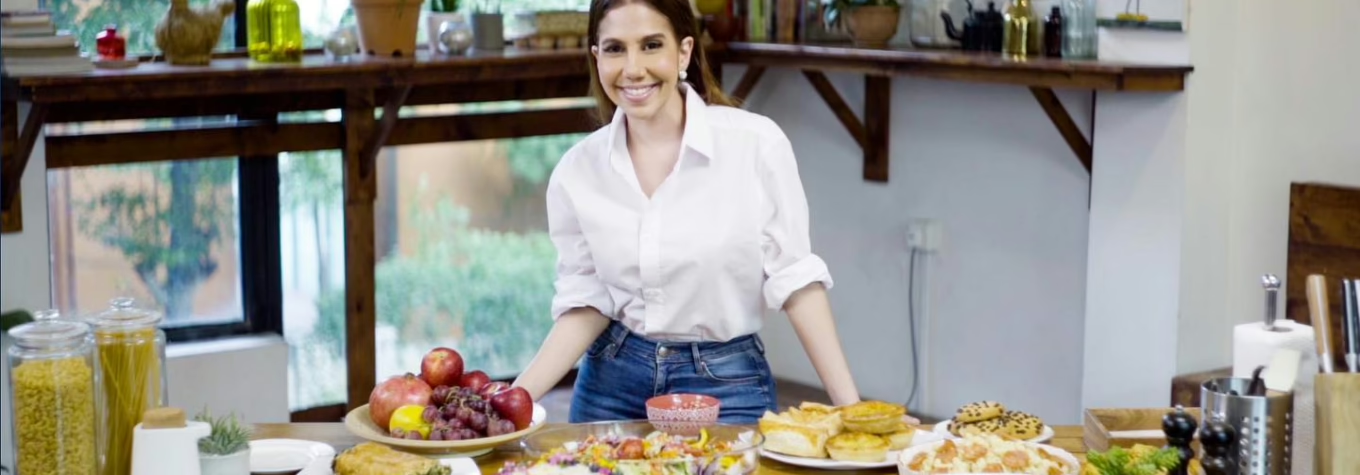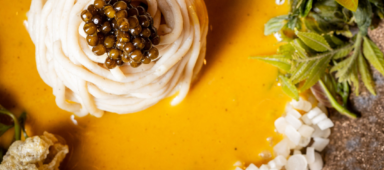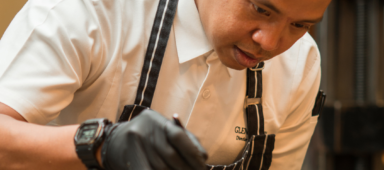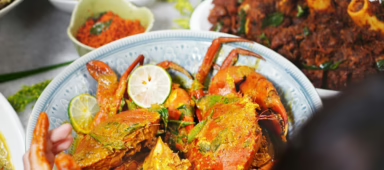TV chef Anis Nabilah sets her heart on popularising Malaysian cuisine globally
When Anis Nabilah made her debut on the TV cooking show Icip Icip 2007, she took the industry by surprise. Petite, female and only 21 years old, she did not fit the celebrity chef mould during the pre-YouTube era, when maturity was an advantage.
The fast-cut show format was often wildly improvisional. Audiences would see Anis scrambling to look for her ingredients, just like a harried housewife in a working kitchen. “Sometimes we planned the menu in advance, but there were days the producer would tell me in the morning we’re going on a boat along the Sarawak river and you’ve gotta whip up something on the fly. Err … what to cook? Fish, of course!”

Keeping it real, coupled with her bubbly personality, endeared Anis to viewers. Icip Icip became the first Malaysian show to be picked up by the Asian Food Channel, establishing Anis as one of the region’s most highly sought television chefs and an unlikely champion for Malaysian cuisine.
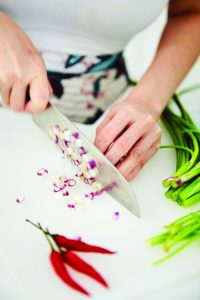
Anis’ love affair with cooking began at home; living under one roof with seven siblings, grandparents and parents, “every day was the kind of feast you see during Raya (the Eid festival)”, she says. Raising a large family made Anis’ mother more creative in the delegation of kitchen tasks, such as giving each child different-coloured bowls with different ingredients that make up a marble cake. “Mum was a working mother who would cook when she came home. We would make such a mess, but she didn’t care as she got to spend time with us.”
Though Anis may be the family’s resident TV chef, on special occasions like Eid, everyone chips in. “Up to 200 people come over, so we’re divided into two teams.” Anis tackles nasi jagung (corn spiced rice) and ayam ros (a spicy-sweet chicken dish popularised by Penang restaurant Hameediyah).
How Anis arrived at the ayam ros recipe is a story for the family annals. Hameediyah was the caterer for her grandparents’ wedding, where one of the dishes was its signature ayam ros. Hameediyah wouldn’t reveal the recipe to Anis, so the determined young woman ate at the shop eight times and jotted her observations in a curry-stained notebook. Once she was confident that she’d nailed it, she cooked the dish and invited her aunts over to judge. “They said it tasted exactly like the original! Of course, being my aunts, they might be a bit biased.”
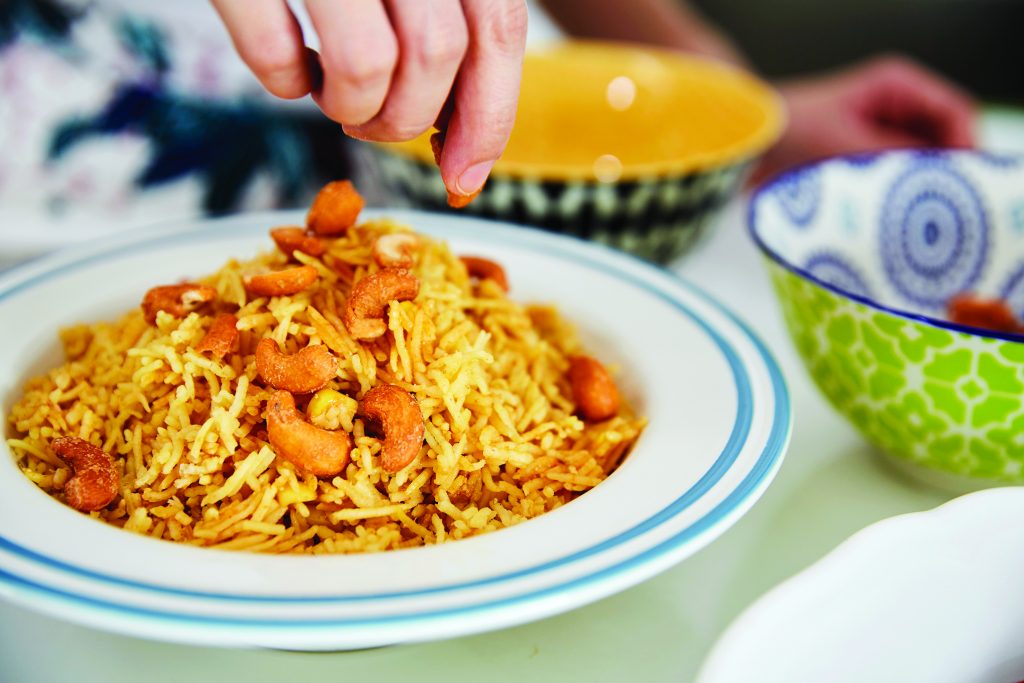
Anis’ formidable palate – more precisely, her ability to crack the recipe of a dish by tasting it – is something she has demonstrated since a young age. As a teenager, she would cook her way out of trouble. Whenever she was grounded, she would concoct her parents’ favourite comfort food; coming home unsuspectingly to the spread, their resolve understandably softened by the time Anis got around to asking, “Mak (Mother), can I go out this weekend?”
“I was a rebel without a cause,” she says. “Nothing bad, just normal teenage stuff like dyeing my hair pink and missing tuition.” Growing up changed that. She insisted on paying for her studies in culinary school because her parents still had to fund three younger siblings. “I figured I’d given them enough trouble as a kid!”
Enrolled at the Food Institute of Malaysia, Anis found her calling. “The rebel without a cause became a bookworm, nerd and teacher’s pet. For the first time in my life, I knew everything that was happening in a classroom. I picked up everything very quickly because I had a huge interest, (even though) I have an extra bone in my feet which makes standing in hard steel-toed chef boots for 10 hours a day very painful. Every night, I’d put my feet in hot water with salt, but the next day I’d be back at it.”
Her peers commented that with her good looks, she belonged on TV instead of in an industrial kitchen. Their words proved prophetic. Six months after graduation, she was handpicked from 60 hopefuls to host Icip Icip, a Malaysian-Indonesian collaboration.
With 50 shows and counting on her resume, Anis is happy to continue taking on work that excites her on a project-to-project basis. She has a show coming out during Eid called 1, 2 Bakar to demonstrate ways of cooking with an oven. The idea is to gently encourage cooks to go out of their comfort zone and experiment, something that Anis is passionate about.
Her goal is to see Malaysian food make it in a big way globally. Malaysians’ lack of appreciation for their own cuisine – and enchantment with the West – frustrates her, something she confesses to being guilty of at one point. “When I graduated, I wanted to cook French and Italian. They come up with all these fancy terms like mirepoix, which sound so glamorous when it’s just chopped vegetables.”
That perspective changed when she did a show with local TV station RTM that required her to travel the breadth and length of Malaysia and learn every state’s culinary specialities. One memorable episode involved chopping a coconut tree to extract its umbut (hearts of palm), an ingredient that shot to fame when Brazil’s Alex Atala used it to make pasta.
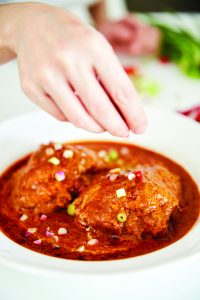
“Our ancestors have been using pandan for centuries, and all of a sudden, Nigella Lawson says pandan is the next ‘it’ ingredient; only then we are raving about it! Why are we waiting for other people to popularise our food?” she points out.
“Malaysians like to say our food is the greatest, but we don’t support our industry with action. We are willing to pay through our noses for Western food, yet we don’t want to spend more for a local dish that has undergone hours of labour and utilises scores of ingredients to prepare.”
Happily, she believes that attitude is shifting. “Rendang was named the world’s best food by CNN in 2017. For the first time, we gained a spot in Asia’s 50 best restaurants and it’s a Malay concept restaurant. I was like, finally! Looking at the culinary scene, I can see that the new generation of Malaysians are more appreciative of traditional foods. They are working hard to push our culinary legacy forward and I want to be one of the people who do that.”
How to recreate Anis Nabilah’s Nasi Jagung with Ayam Kapitan Penang recipe
Ingredients for Nasi Jagung (sweetcorn rice):
- 2 cinnamon sticks
- 5 cloves
- 5 cardamoms
- 4 star anise
- 1 white onion, blended
- 1 green chilli, blended
- 4 candlenuts, blended
- 2 tablespoons of kas-kas, blended
- 5 garlic cloves, blended
- 5 shallots, sliced
- 2cm ginger, sliced
- 4 lemongrass, bruised
- 3 tablespoons of ghee
- 2 cans of evaporated milk
- 1 cup water
- 1 cup warm water
- 4 cups Basmathi rice, soaked for 15 minutes, toss and drain for 15 minutes
- 1 can of corn in water
- A big pinch of saffron
- 1 tablespoon of chilli powder
- 2 tablespoons raw honey
- Scallions
- Fried shallots
- Salt
Method:
Sprinkle saffron into warm water and leave it to soak for 15 minutes.
Melt ghee in a non-stick pan over medium heat. Sauté cinnamon, cloves, cardamoms, star anise, shallots, ginger and lemongrass till fragrant, about 2 minutes. Add blended spices, chilli powder and corn, and sauté for another 2 minutes or until the oil splits from the spices. Season with salt and remove from heat.
Place rice, water, saffron water, evaporated milk, honey and sautéed spices in the rice cooker. Leave it to cook and sprinkle scallions and fried shallots over rice before serving.
Ingredients for Ayam Kapitan Curry:
- 2 whole chickens cut into four, skin removed. I use ayam kampung (free-range chicken)
- 5 tablespoons ghee
- 4 star anise
- 6 cardamoms
- 6 cloves
- 3 cinnamon sticks
- 2 handfuls of dried chillies, boiled and blended
- 1 big onion, blended
- 10 shallots, blended
- 8 garlic cloves, blended
- 2 inches ginger, blended
- 3 stalks lemongrass, bruised
- 2 inches galangal, blended
- 2 inches fresh turmeric, blended
- 8 pieces candlenut, blended
- 2 green chillies, blended
- 2 tablespoons kas-kas (polished poppy seeds)
- 3 tablespoons coriander seeds
- 3 tablespoons cumin seeds
- 2 tablespoon fennel seeds
- 2 tablespoons black peppercorns
- 2 cans of canned tomatoes, blended
- 2 cups coconut milk
- 4 tablespoons raw honey
- Salt
- Vegetable oil
- Water
- Fresh coriander
- 2-3 green chillies
- 2-3 red chillies
Method:
Heat vegetable oil in pot and deep-fry chicken pieces that have been seasoned with salt. Fry till golden brown and set aside.
Heat a non-stick pan over medium fire; add kas-kas, coriander seeds, cumin seeds, fennel seeds, black peppercorns; toast spices for 2-3 minutes, stirring frequently. Leave to cool slightly. Place spices in a spice blender and blend till you get a fine powder texture.
Melt ghee in a big wok over medium heat. Sauté star anise, cloves, cardamoms and cinnamon till fragrant. Add dried chillies and sauté until the oil splits from the paste. Add the ground spices and the blended spices. Add a bit of water to slow the cooking. Add tomatoes and fried chicken and leave to boil for 15-20 minutes. Add coconut milk and boil for another 5 minutes. Season with salt, add honey and sprinkle coriander before serving.
Shoot location courtesy of the showroom at Kitch, Petaling Jaya
